Cadaster
Spatial infrastructures of land
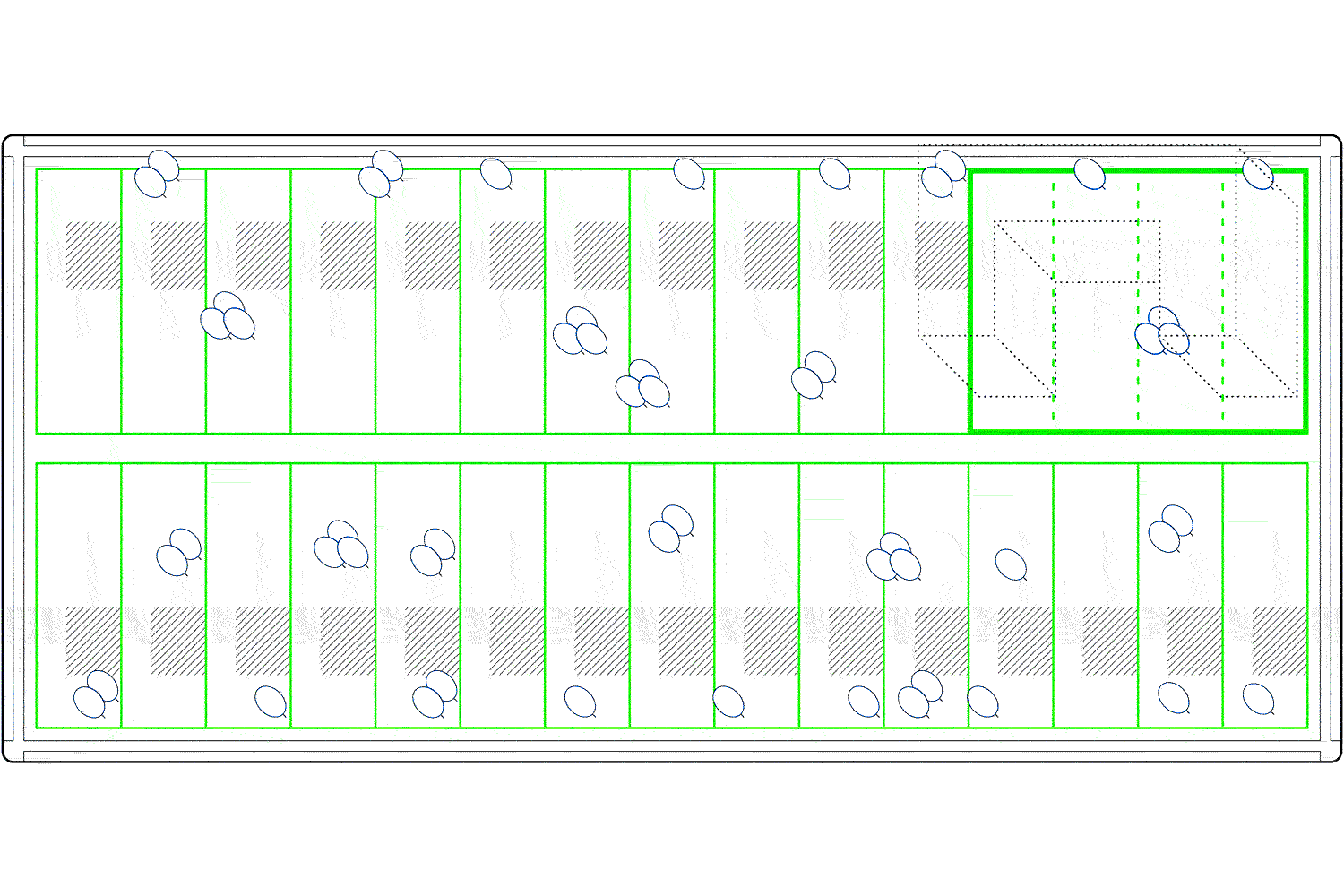
Mutable Minima: Undoing the Minimum Lot and Building Size Ordinances in North American Suburbs
Various cities, US, 2022
Design
Presented at the What Next with Mom’s and Dad’s House? The Transformation Potential of the Single-Family House International Symposium at Politecnico di Milano (organized by Martino Tattara and Federico Zanfi)
In subdivision, perhaps no zoning regulation plays a more governing role than what is known since the early 20th century as the minimum lot size: a spatial prescription that prevents the creation of any lot smaller than a given area. Tracing the history of minimum lot subdivision and its adverse social and environmental implications, this projects proposes of a set of design strategies to produce a more fine-grained and responsive lot fabric in existing suburbs.
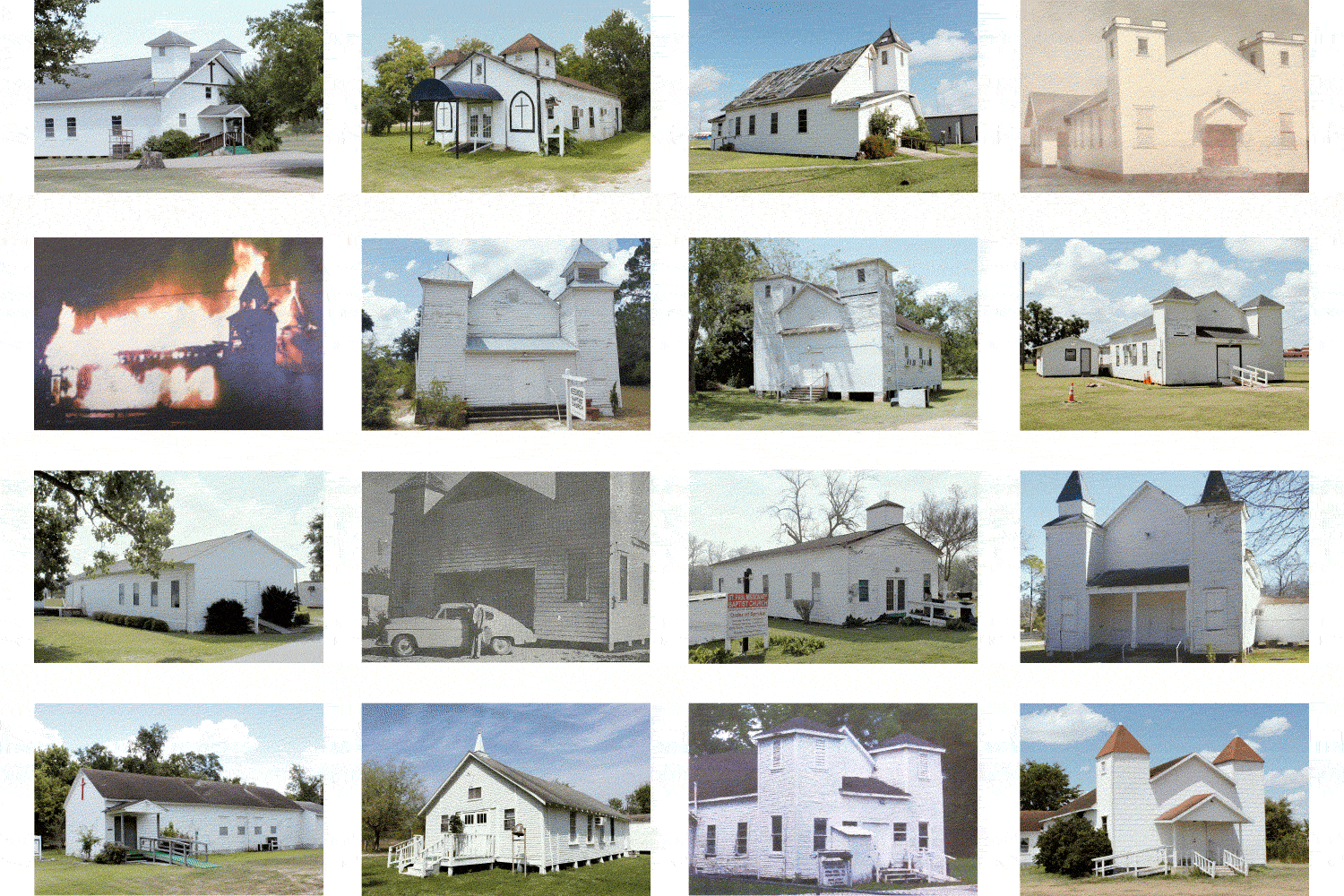
Property as Practice: The Collective Landholding Practices of Black Churches
Houston, US, 2014–Present
Research, advocacy
Published in Urban Space Unsettled: Routines, Temporalities, and Contestations, Sabine Knierbein, Elina Kränzle, and Ed Wall, eds. (Routledge, 2022).
In the aftermath of the American Civil War, freedpeople exercised their newly-granted right to landhdolding by building churches across the American South. Despite the discrimination they faced, freedmen built a regional network of rural churches — the freedmen churches — that embodied a radical form of landholding based on collective practices.
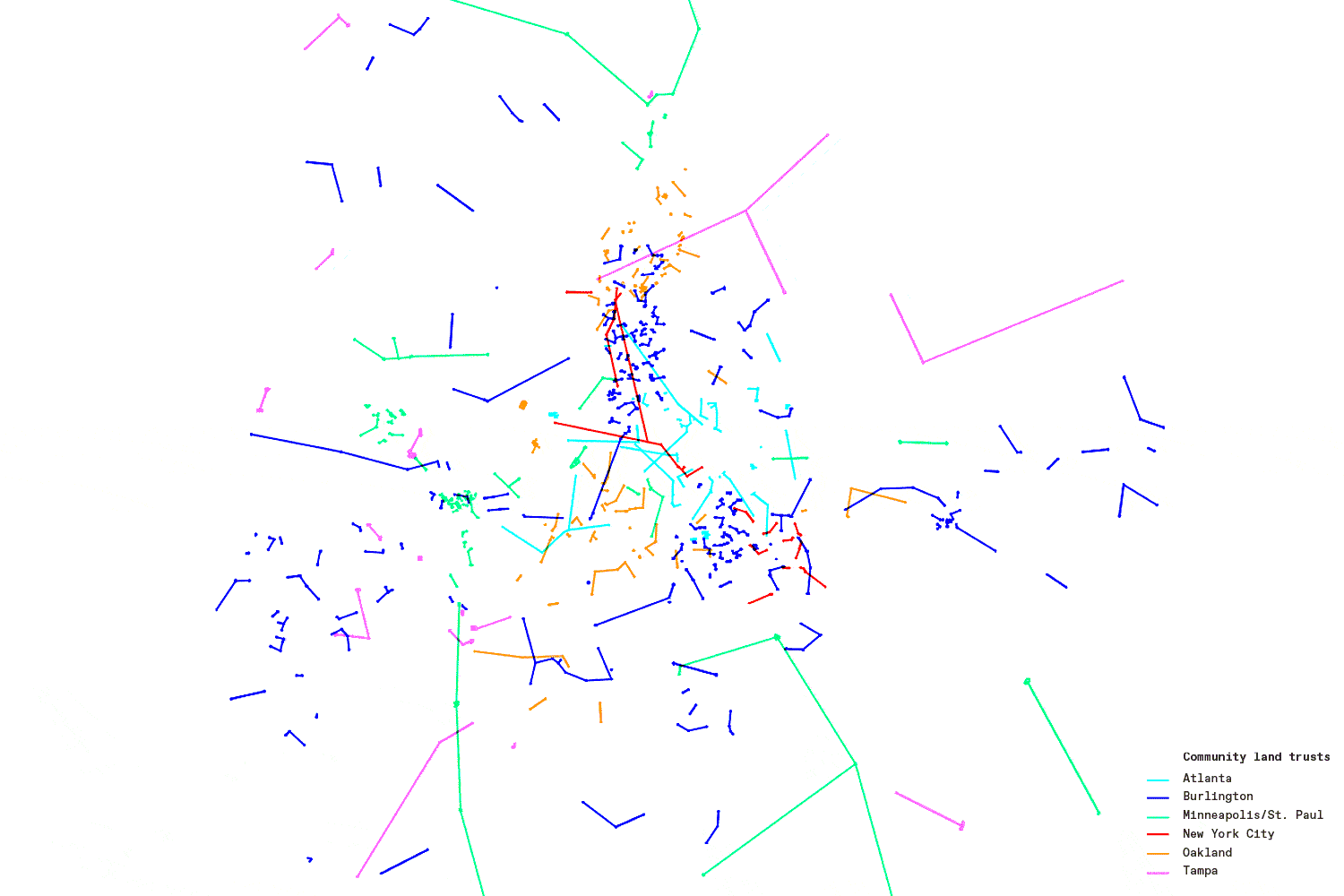
The Spatial Coordination of Community Land Trusts
Minneapolis, Atlanta, Tampa, New York City, US, 2021–2022
Research, advocacy
Collaborators: Clare Coburn, Xiaohan Gu
Whereas real estate-driven development tends to invest in singular and concentrated sites, resident-led development thrives in scattered patterns. The properties of community land trusts (CLTs) – one of the foremost models of resident-led development whereby land is claimed and used by a community without landlords – are almost always dispersed in a context where every property line is a potential obstacle to development.

Virtues of Proximity: The Benefits of Strategic Dispersal
Various cities, US, 2020–Present
Design
Collaborators: Clare Coburn
To appreciate the potential of the community land trust model, one must observe the way that a trust’s land is spatially dispersed in a city. What they lack in terms of economy of scale is compensated for by virtues of proximity. This project explores the design potential of position, proximity, and terms of use.

Designing Real Interests
Various cities, US, 2019
Design
Collaborators: Clare Coburn, Reed Miller, Victoria See
This set of projects demonstrates a design approach based on the concept of the “land interest” that seek to contend with the property infrastructure. These are tangible means for the architectural imagination to confront challenging political realities. These five proposals operate at the level of the “interest” to taken on carbon economies, the geography of migrant workers, gerrymandering, housing, and property taxation.
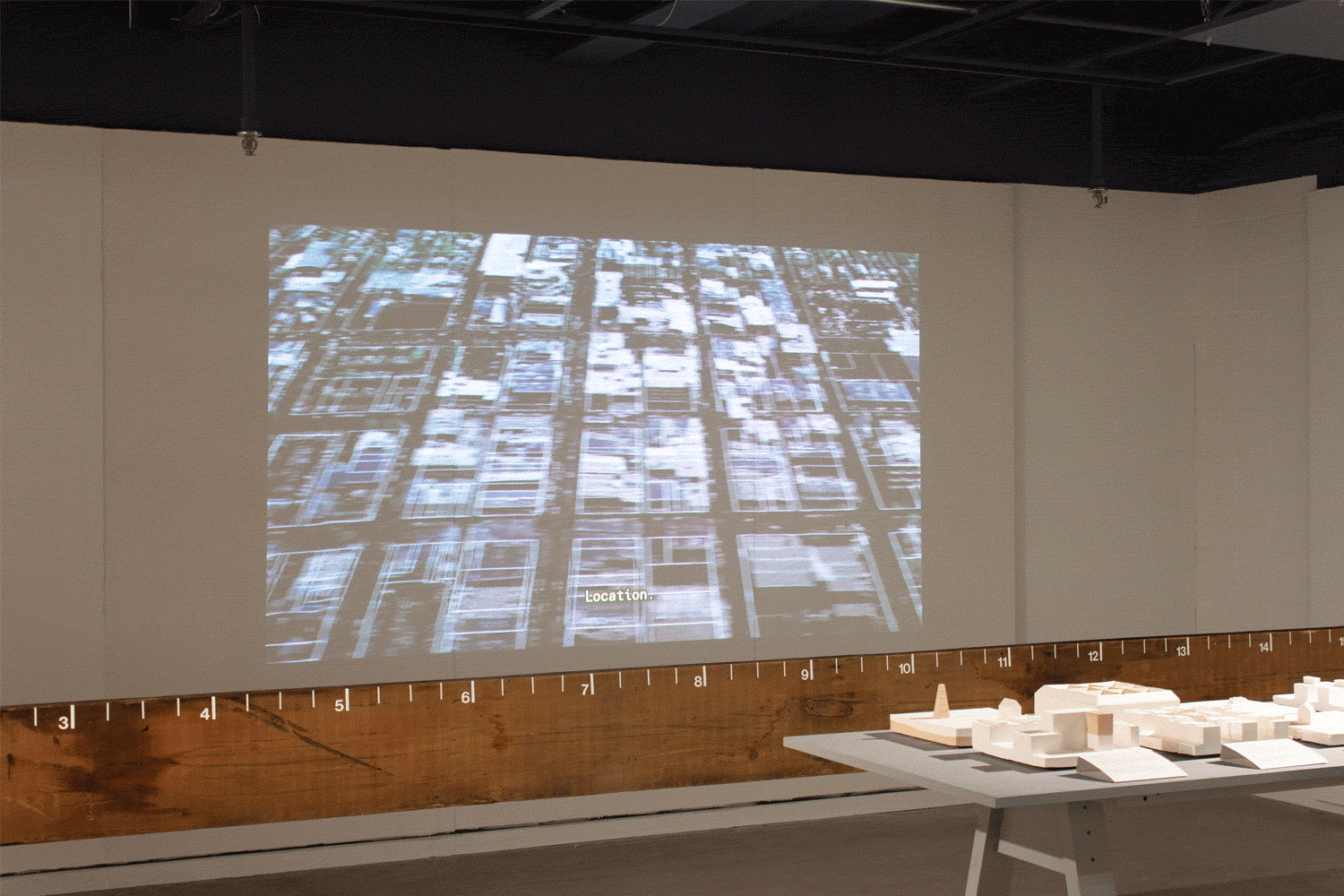
The Interval of Territory
The University of Michigan, 2019
Exhibition
Collaborators: Clare Coburn, Reed Miller, Victoria See, Jordan Voogt, Mick Kennedy, Edward Falkowski, Karun Chughasrani
Drawing from ten case studies in the development of property and in particular the formation of property in the 19th century in the US, this exhibition articulates the basic spatial and material implications of a territory ordered — physically and socially — by land division.
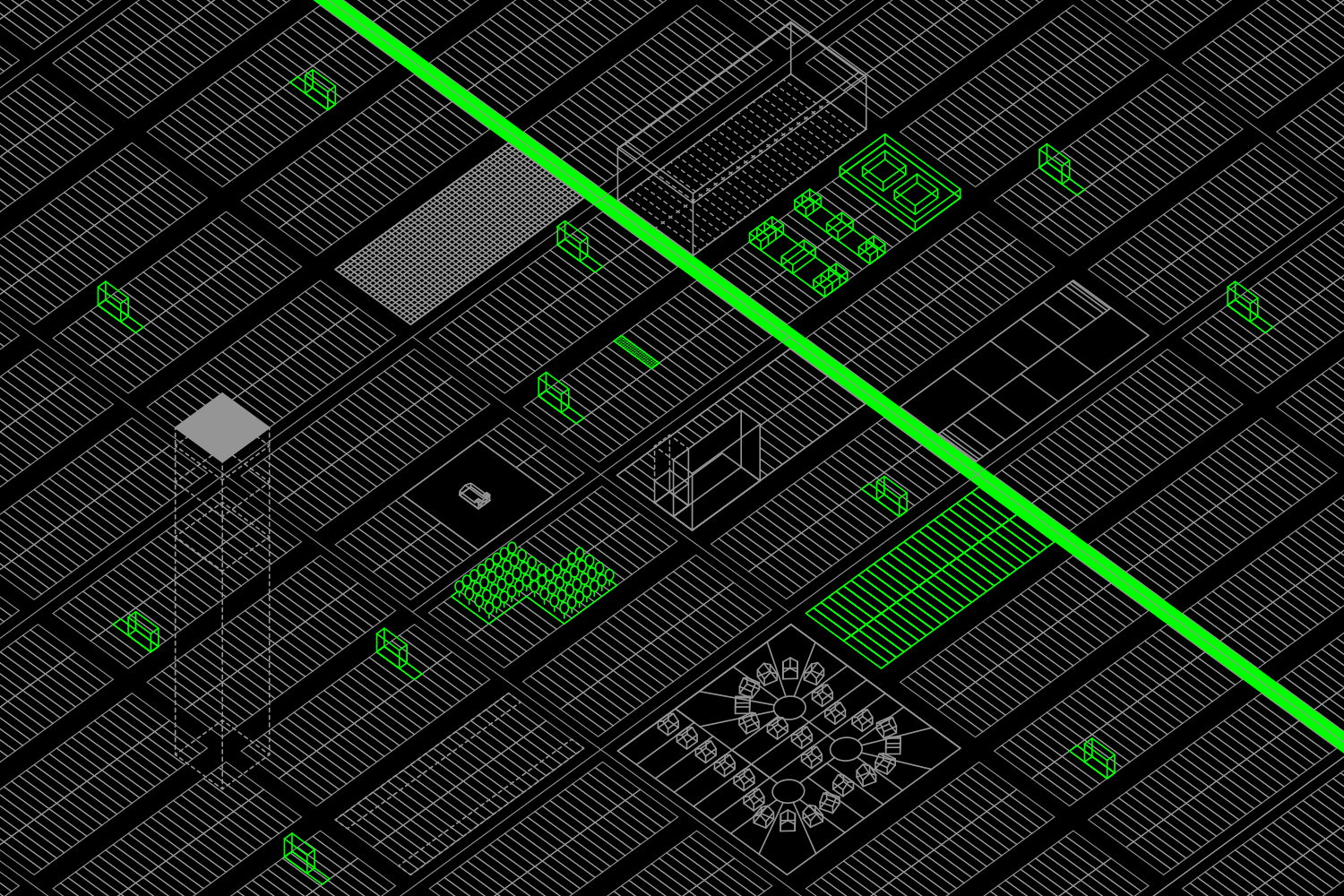
“The Architecture of Real Property”
The Berlage (TU Delft), 2020
Lecture
Often understood as an abstract legal and economic category, property tends to draw hardliners — it is either to be abolished at all costs or upheld as a marker of freedom. This talk suggests a more nuanced point of view: that property is an infrastructure of information and relation that is inherently spatial, material, and territorial, and therefore a subject of design.
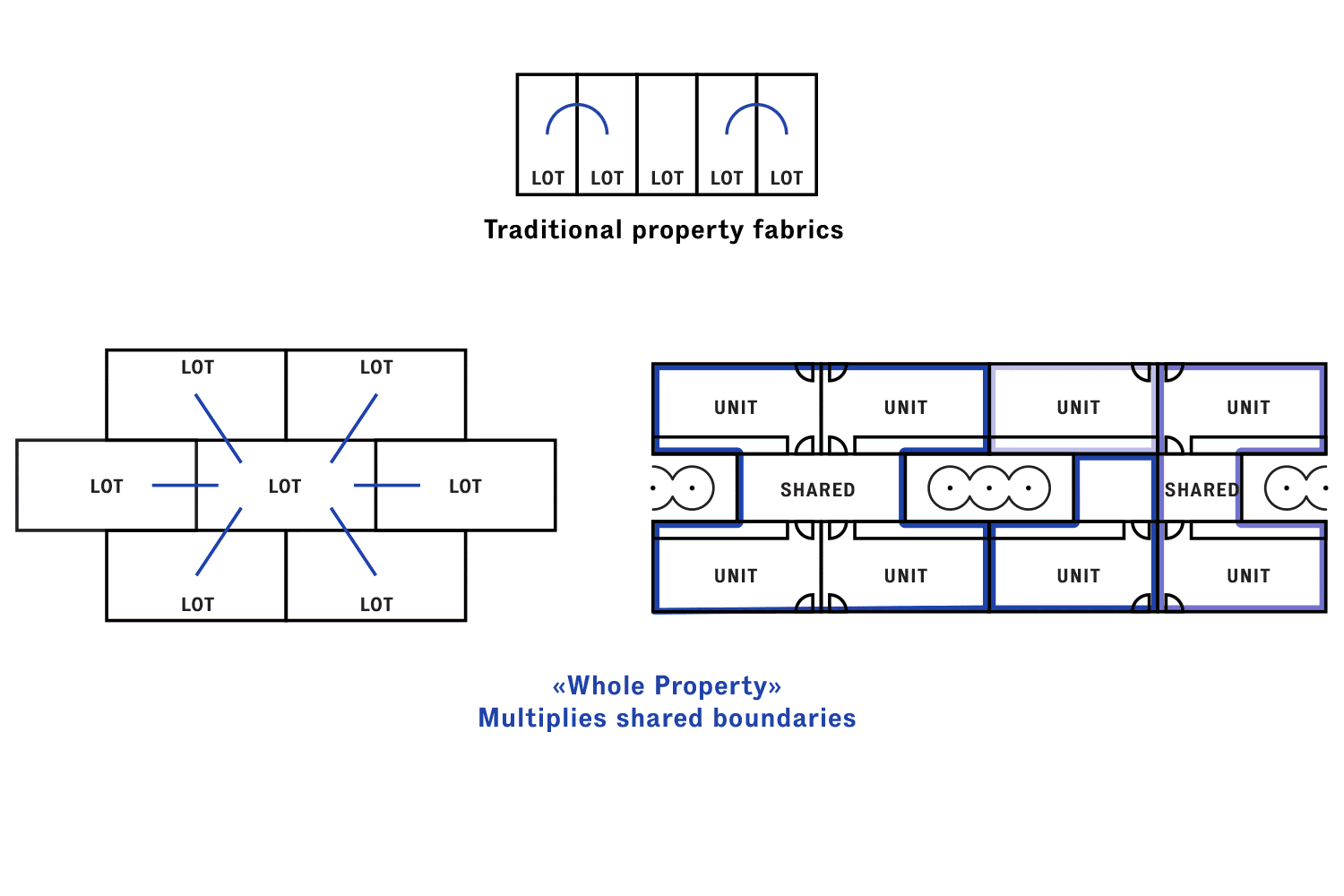
Whole Property: A Circular Spatial Ecology
Backnang, Germany, 2020
Design competition (IBA 2027)
The reformulation of property for IBA 2027 holds that property entails rights, but also obligations. Here, this means that environmental and social duties must be met in-situ, instead of externalizing them. This form of care means that all the infrastructures normally outside the city (landfill, wastewater treatment, power plant, farms) will be re-accommodated on the parcels of property. By multiplying the possibility for neighbors to cooperate across their lots and units, they can more easily meet the obligations of ‘Whole Property.’
Existing fabrics
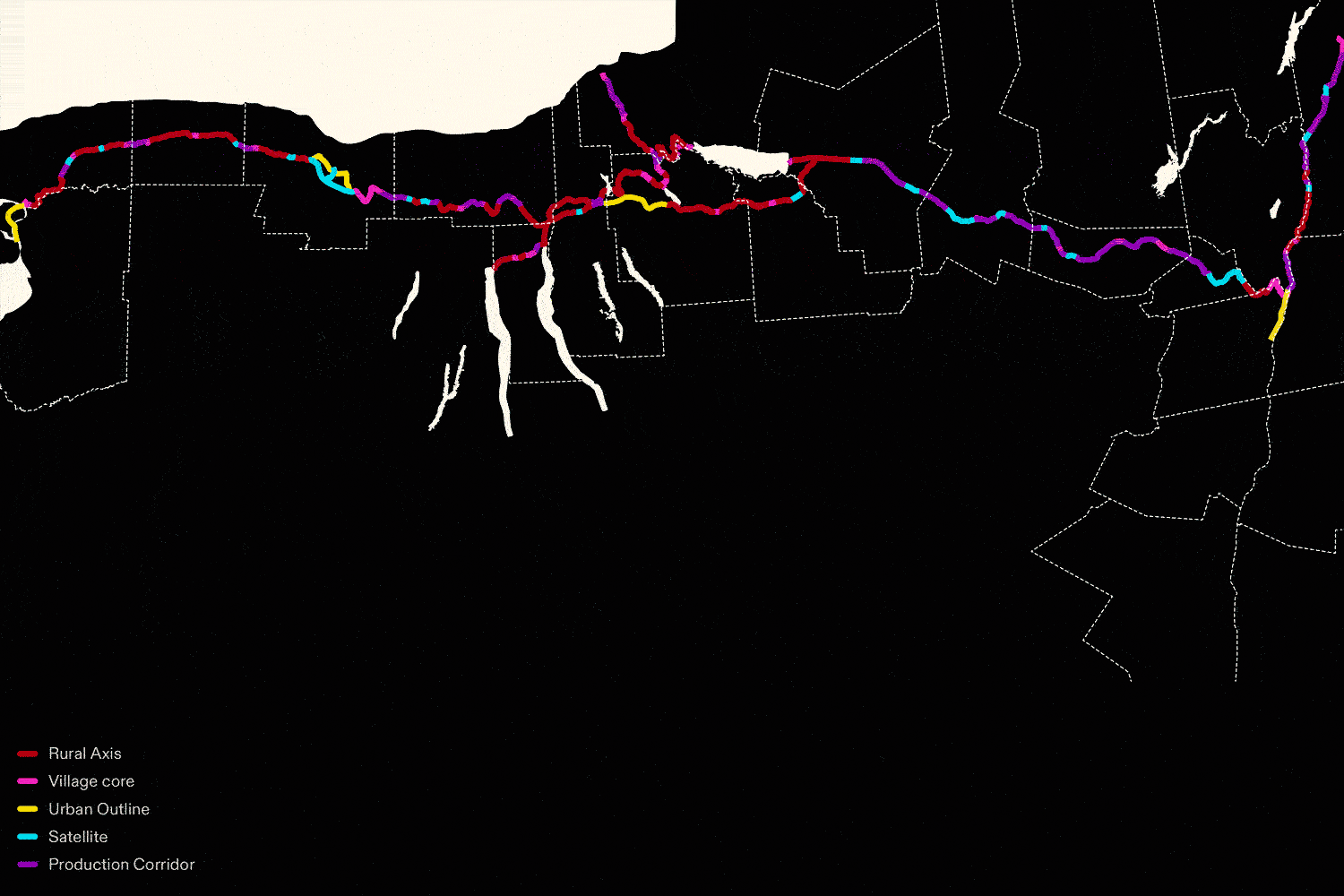
Upstate Ecologies: Regional Vision for the New York Canal System
New York State, 2018
Design competition (New York Power Authority)
In collaboration with Rami Hammour and Jason Pelaez
The Erie Canal corridor varies significantly along its passage through the New York Upstate region. The canal functions as an organizing system for infrastructure, energy, industry, and settlements of all sizes. This regional vision departs from these diverse conditions, exploring how each segment along the canal corridor presents unique conditions, opportunities, and challenges. What can the canal system offer to local communities and visitors? What synergies can emerge from present opportunities? What kind of planning framework could enable a global, yet nuanced, revitalization of the region?

Church Circuit: Rehabilitation of Saint John Missionary Baptist Church
Houston, Texas, 2014–Present
Design, advocacy
In collaboration with Saint John Church
The intervention for Saint John is designed to facilitate neighborly engagement with the site by rehabilitating the historic chapel and activating the plot’s ground surface. A circuit linking various gathering spaces runs along the lot perimeter and connects to a new sidewalk, offering unencumbered access to the church’s extra-territory and rehabilitated historic chapel.
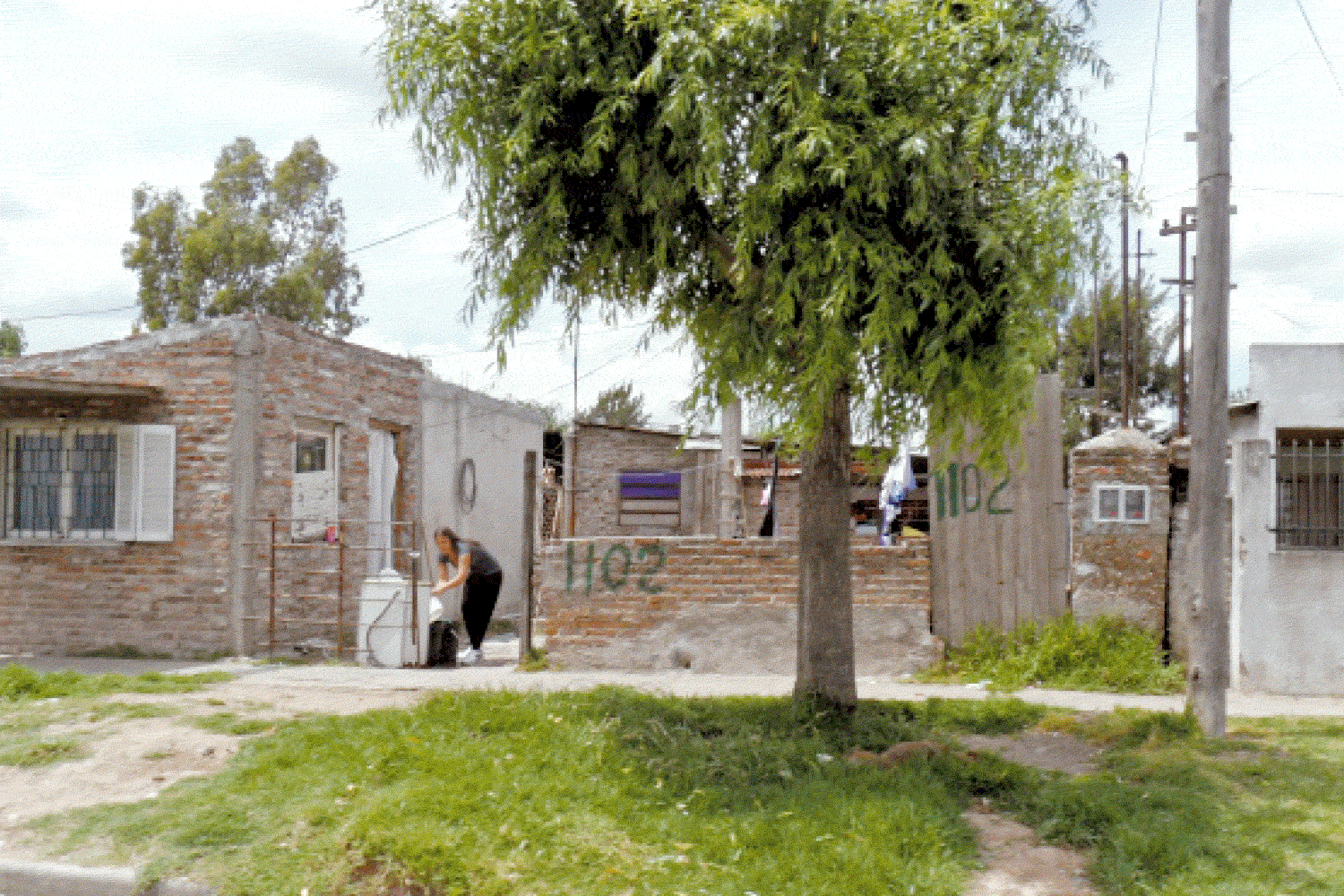
Patio, Barrio, Ciudad
Buenos Aires, Argentina, 2011–2012
Academic project (Flavio Janches, advisor)
Collaborators: Rizki Supratman
This proposal aims is to augment public space and social agreements present in the self-built neighborhood of Independencia. At the patio scale, the proposal elaborates the parcel arrangement into both private and shared patios. For the barrio, interactions between the groups that inhabit the barrio find a new location in the “patio de la manzana,” or block patio. At the city scale, rearranging the neighborhood’s links to surrounding areas may bring about a change in the image of Independencia.
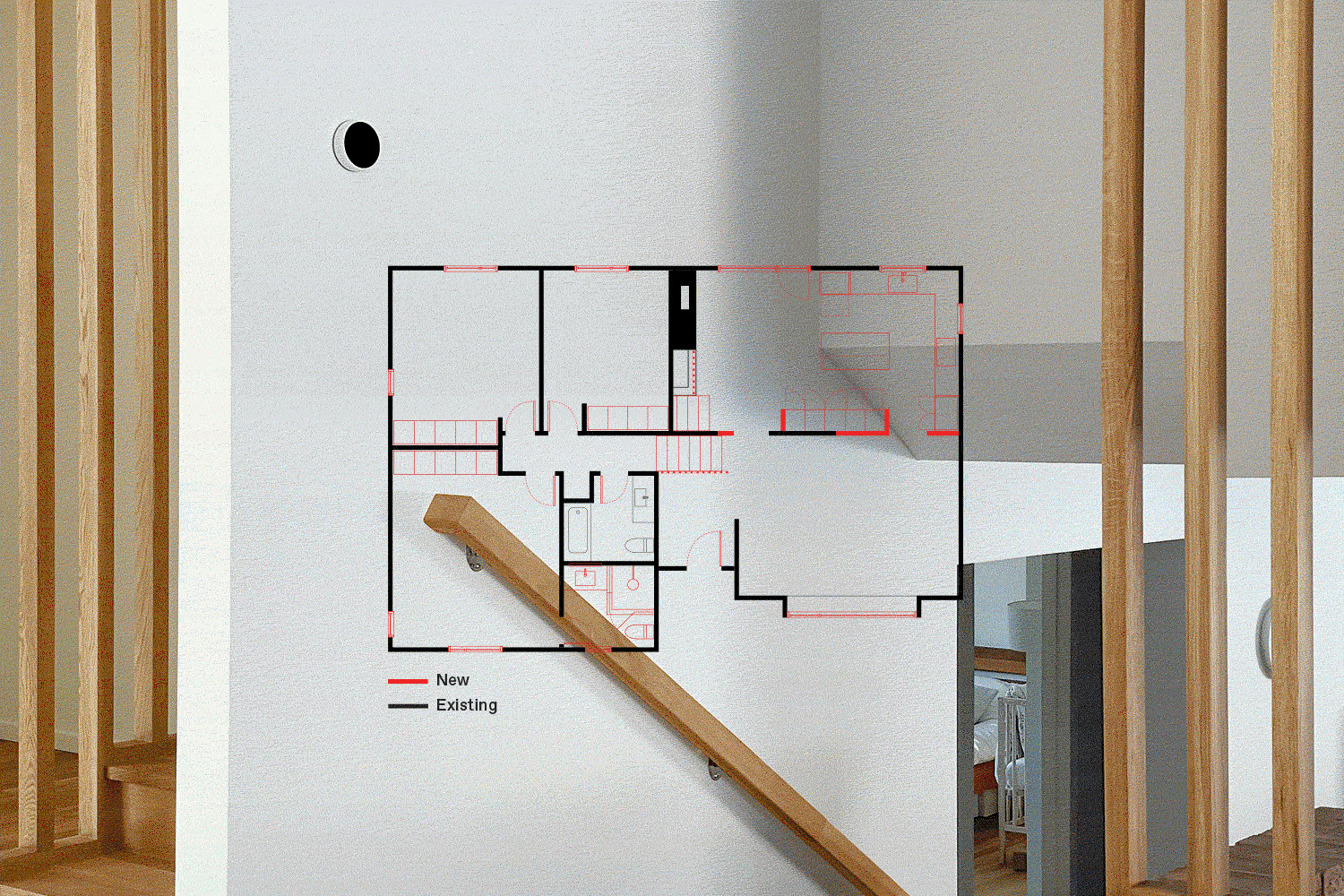
Retrofit of 1960s developer house
Saint Paul, US, 2020–2021
Design, construction
The commissioning landholder acquired this developer house on the outskirts of Saint Paul, Minnesota with the intent to retrofit the structure. The design provided enhancements to the energetic performance, indoor air quality, and spatial flexibility. By carefully removing walls in a way that maximized the span of the standard wood framing members, the floor plan provides new versatility of use, while maintaining separation from one room to the next. The envelope of the lower floor was upgraded, and all openings and finishes were replaced.
Environmental change

Headwater Lot
Quebec City, Canada, 2017–2019
Design competition: First Prize
In light of Quebec City’s extensive road network and deteriorating river conditions, this project focuses on how to repurpose redundant streets, creating versatile spaces that thread through the city and its four rivers. The repurposed roads — ‘headwater lots’ — create axes for urban agriculture, active transit, stormwater infiltration, and more. Each leads to the river edge, connecting inland neighborhoods to the waterways. The newly created, monumental axes are composed of shorter interconnected segments, which can each be developed according to the adjacent conditions and neighbors’ input.
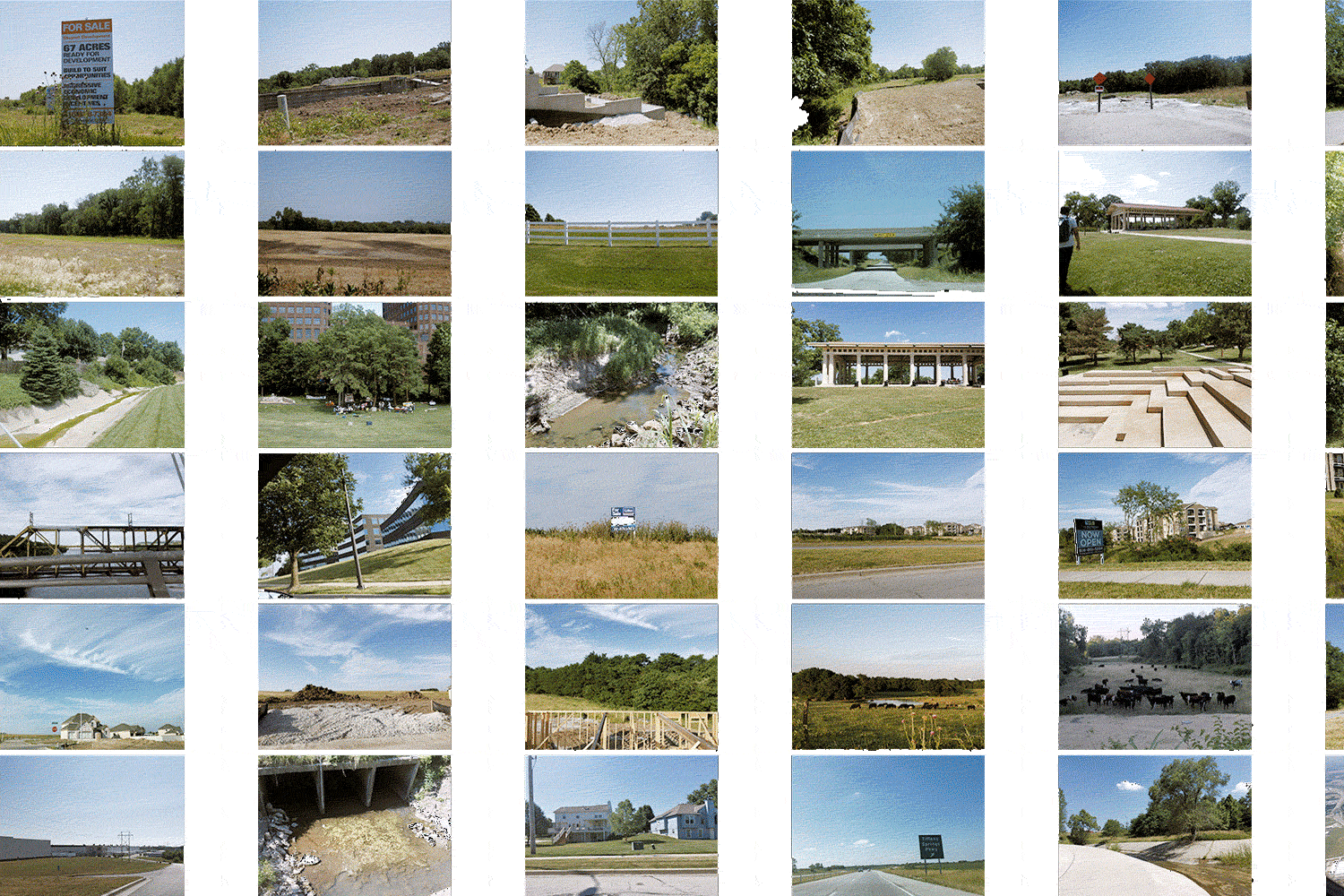
Territorial Positions
New School Parsons School of Design, 2018
Lecture
With support from The Architectural League
The architecture of territorial positions has to do with the field of forces, institutions, and customs that pervasively and precisely shape environments. In this talk, Cadaster presents how territories are shaped, maintained, and made vulnerable change through spatial design. Real property, watersheds, and rights-of-way are explored as infrastructures of design.
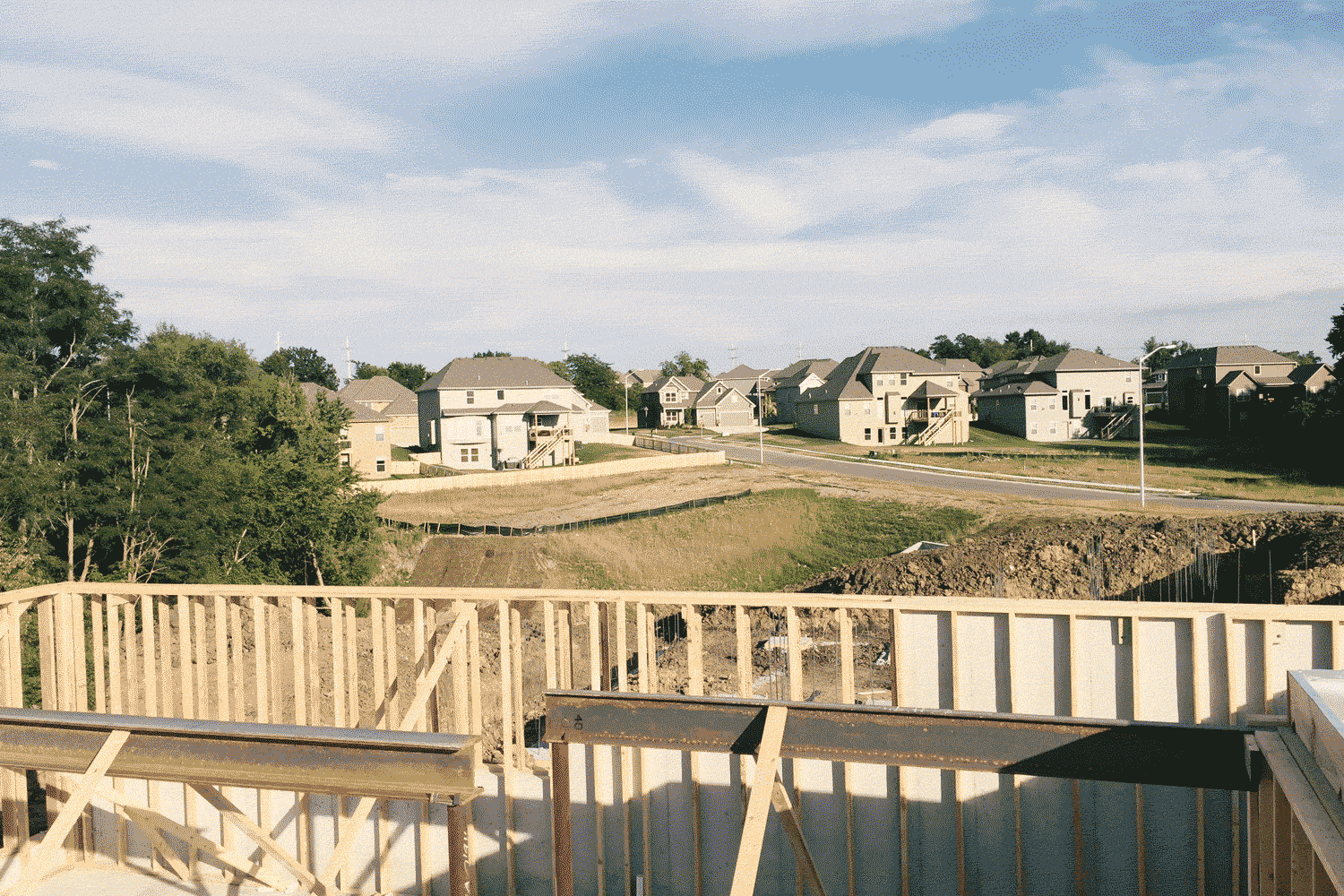
Preemptive Watershed
Kansas City, US, 2016
Design competition: First Prize
Using watershed boundaries as a module of territorial formation, this proposal outlines a series of preemptive trails along the creeks in a way that will influence future patterns of urbanization. The likely exurban development may hemmed in by the incremental, watershed-centered system, while the trail network predisposes the territory for active forms of mobility.
Teaching
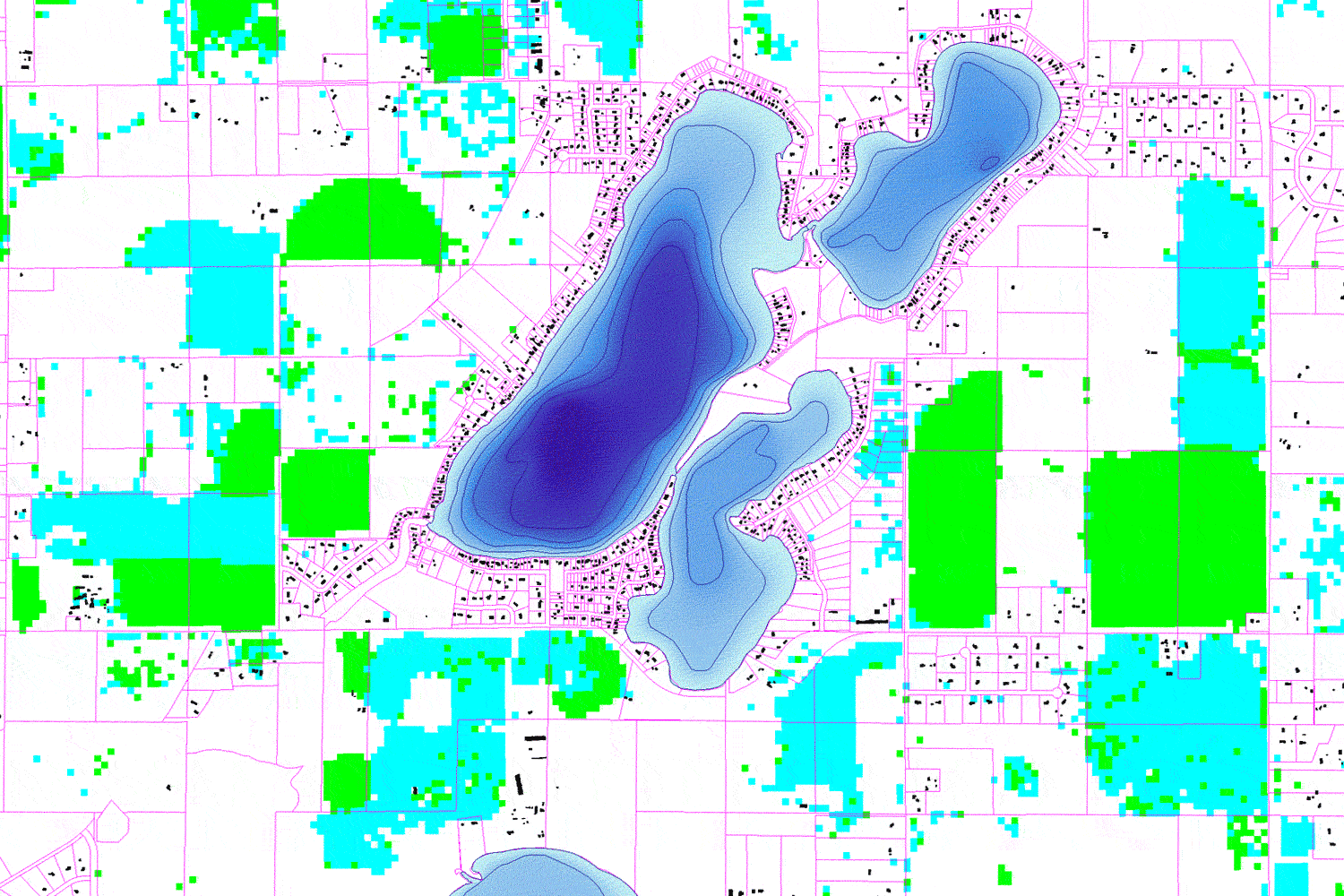
Local Nonlocal: Watersheds of Minnesota
University of Minnesota, 2021, 2022
Design studio
This design course is concerned with spatial interactions that occur at a distance, a phenomenon known as “nonlocal” interactions. Focusing on the territorial entities that best exemplify such interactions — watersheds — the studio is tackling environmental conflicts present across Minnesota’s hydrological territories. Due to the fact that any waterbody is impacted by activities in the greater watershed, however remote, these territories are a helpful starting point in defining how architecture can play a role in addressing environmental and climate change.
Student work
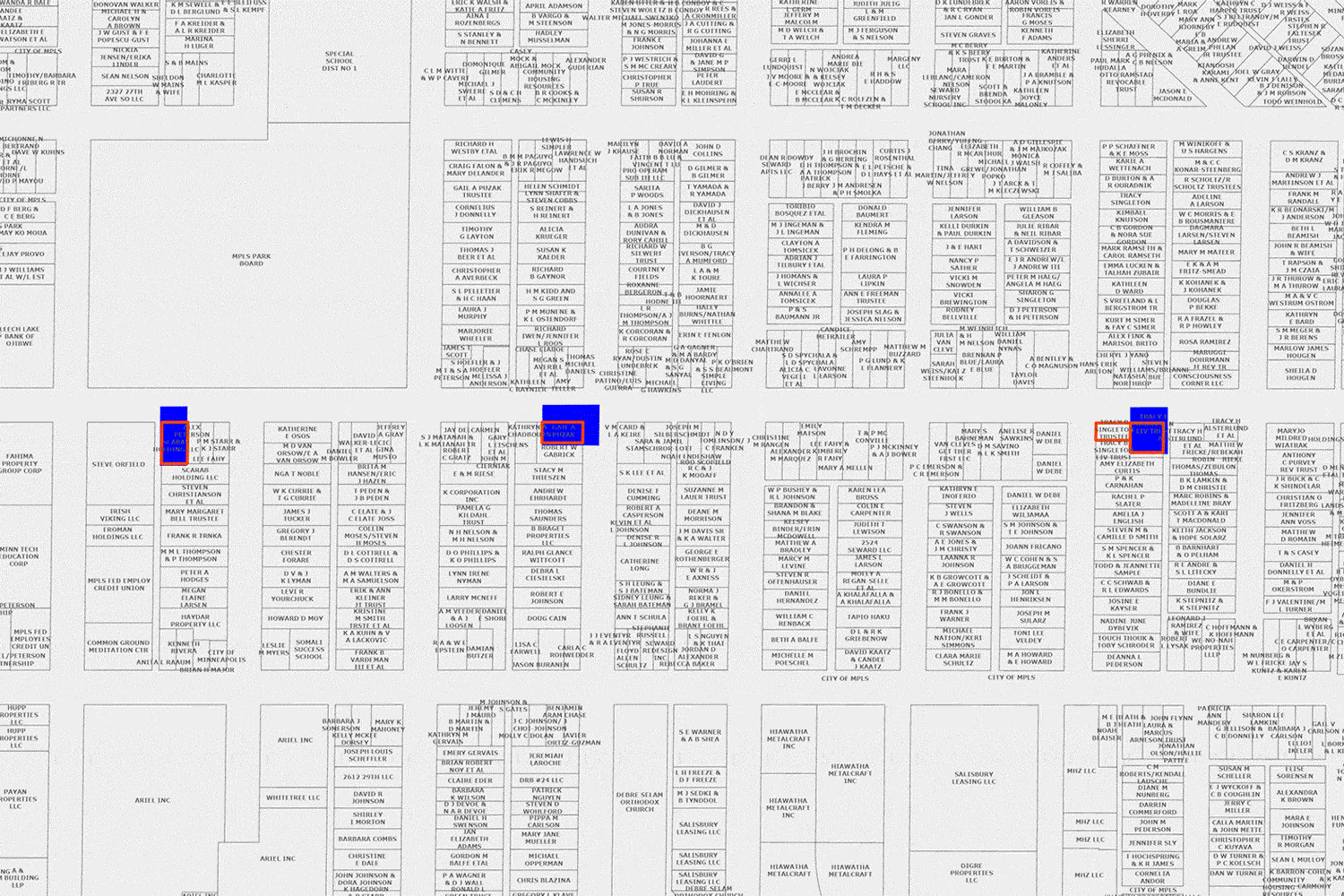
Urban Reconfiguration: Neighborhood Commercial Districts of Minneapolis
University of Minnesota, 2022
Design studio
‘Reconfiguration’ prompts designers to alter the underlying systems that govern architectural form, urbanization, and places, looking toward new and more just cultural values and practices. Dealing with what already exists will be our take on architectural practice this semester. The neighborhood commercial districts of Minneapolis are lots within the residential areas zoned to provide easy access to commerce within a single neighborhood. While they are often occupied by private small businesses that do not directly benefit the daily needs of residents, they represent a potential to reintegrate vibrant public environments within the residential blocks.
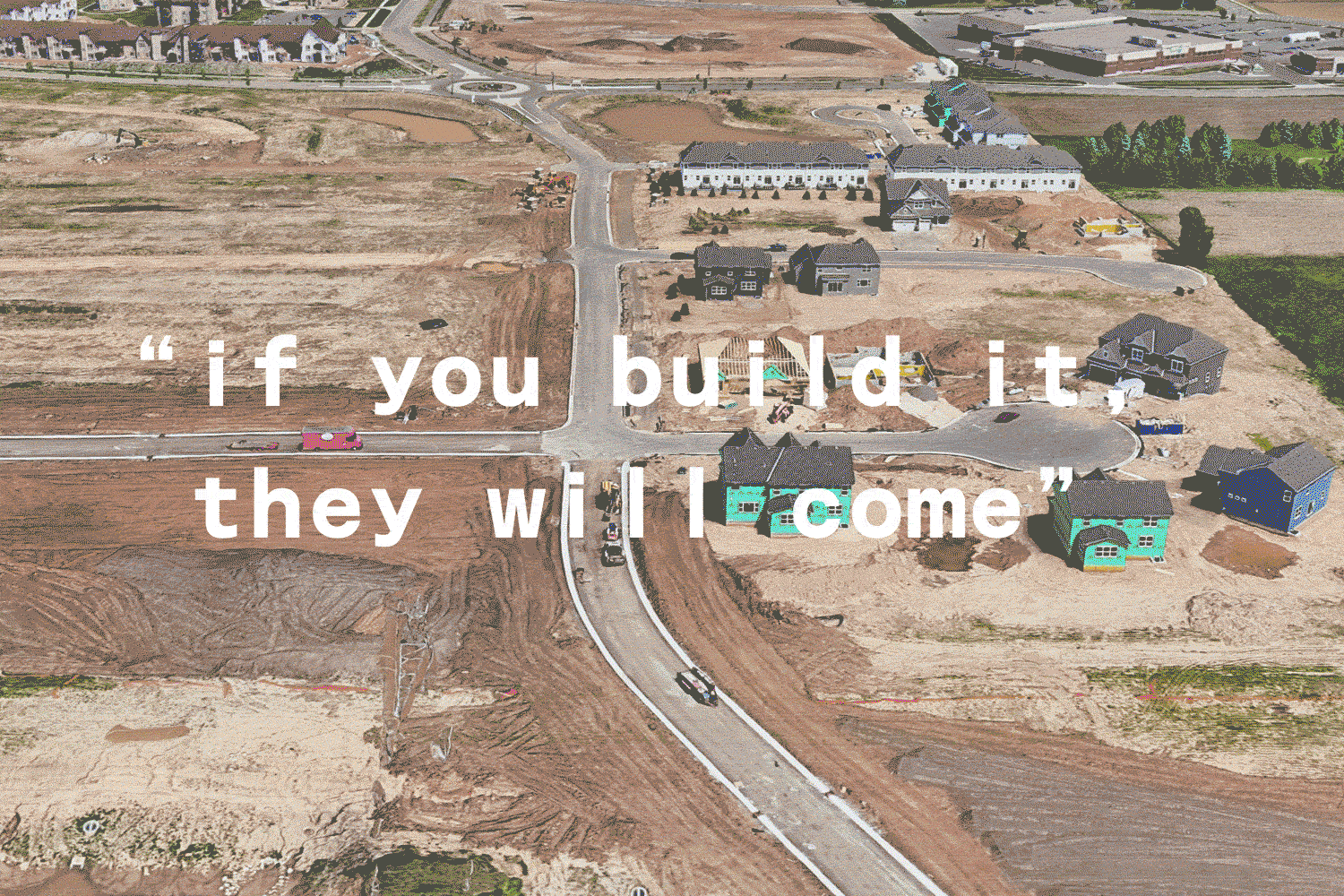
The Urban Fringe of Minneapolis
University of Minnesota, 2021, 2022
Design studio
The urban frontier is a complex, globally-inflected process involving speculative finance, law, material commodity flows, risky encounters with more-than-human life, regulation and deregulation, cultural values, a variety of hard and soft infrastructures, and in many areas, a degree of lawlessness. Accordingly, urbanization urges architects to interpret the environment from the perspective of process, uncertainty, risk, contingency, and inequity. Over the term, we will ask, how are our immediate surroundings shaped by frontier processes? What spatial patterns, ecocultural relations, and financial-legal arrangements could disrupt urbanization?

Tazlina Homeland Recovery
University of Minnesota, 2020–2021
Seminar
Collaborators: Indian Land Tenure Foundation, Native Village of Tazlina
Students: Joshua Brellenthin, Malcolm Brom, Sheng Dong, Madelyn Gulon, Megumu Jansen, Madeline Juve, Jakob Mahla, Manuel Mendoza, Thomas Negaard, Jesus Martinez, Caitlyn Riese, Yiyuan Shao, Jordan Strickland
In collaboration with the Indian Land Tenure Foundation, this series of courses supported the Native Village of Tazlina (Alaska). The result of this community-engaged project was a fundraising video presenting the history, present opportunity, and future vision for the community’s land. Developed through geospatial and archival analysis, interviews with Tazlina, and architectural visualization, the video highlights Tazlina’s connection to the land.
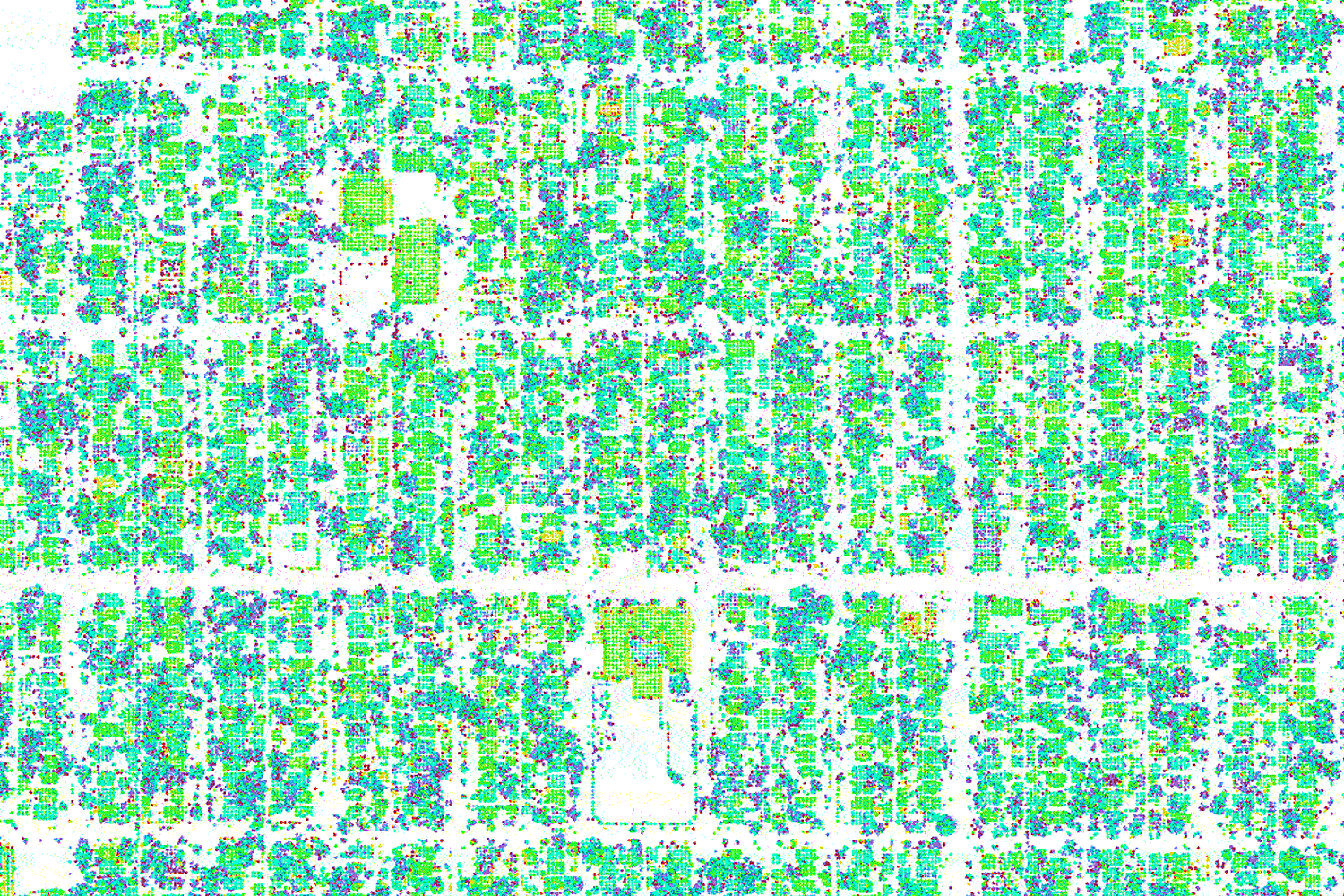
lowercase-a
University of Minnesota, 2021
Workshop
As a result of the traditional distinction between architect-designed structures, on one hand, and environments shaped by other actors and forces, on the other, spatialities beyond the strict design of buildings are often overlooked. Catalyst 2021 opens onto a wide range of spatial, material, and organizational activities and dynamics, attuning students to opportunities for engaging with spatial justice and environmental dilemmas in ways that customary templates may fail to capture. Guest tutors include Lacol Arquitectura Cooperativa (Barcelona), HECTOR (Newark), CLUSTER (Cairo), and Société d'Objets Cartographiques (Paris).
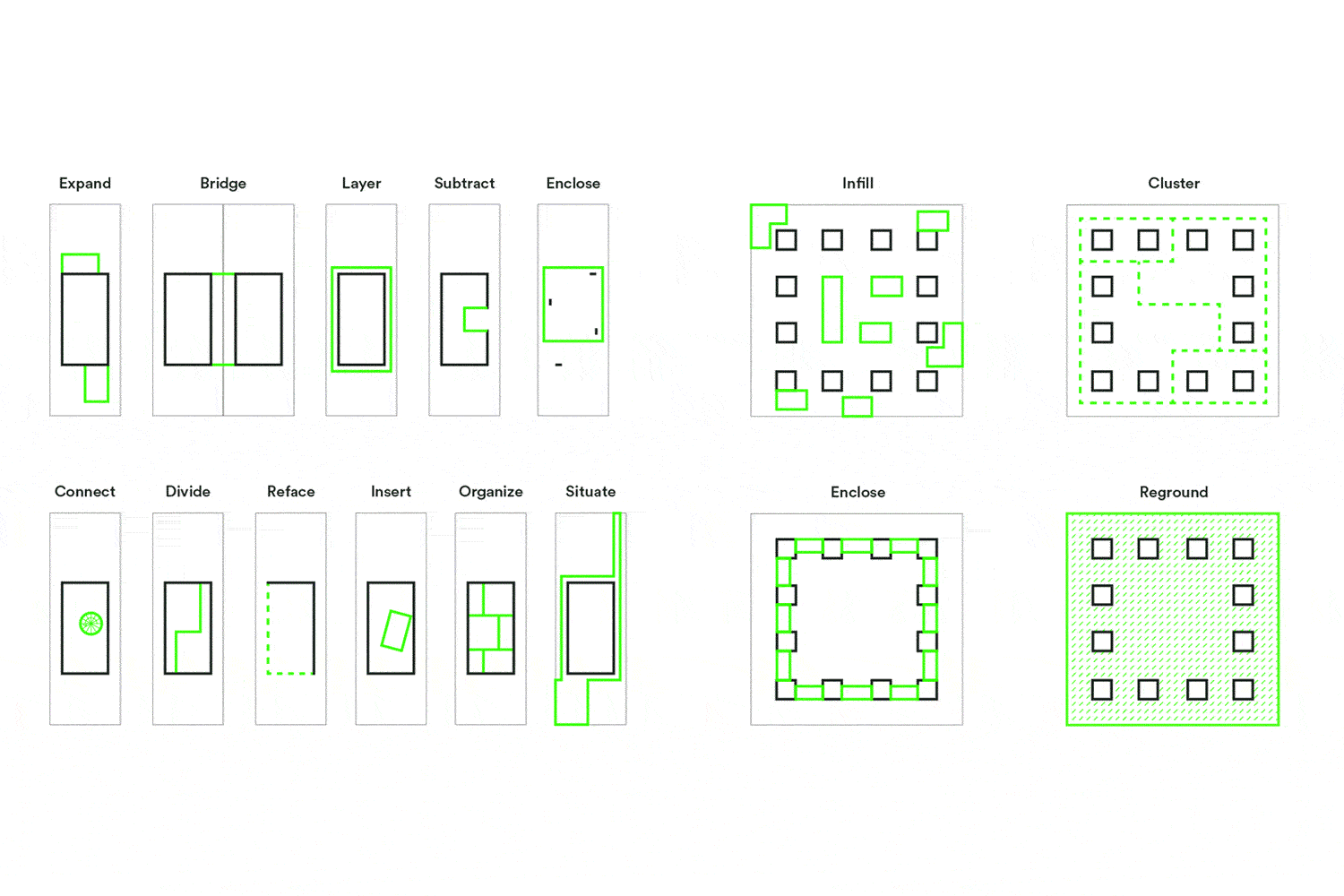
Stock Rehab as Urban Process: The Minneapolis Housing Stock as Public Asset
University of Minnesota, 2021
Design studio
The Twin Cities residential property market has reached unprecedented levels. While corporate builders continue to meet the perennial demand for new single-family suburban houses, about 40% of the structures in Minneapolis are 100 years old or older. However, despite overarching plans for housing and development, building rehabilitation and reconfiguration — activities that have substantial potential impact on domestic life, the qualities of the city, and environmental goals — is mainly left up to individual landholders and investors. This design course takes the approach that the housing stock is a public asset, one which can play a transformative role in households as well as the city's transformation as a whole.
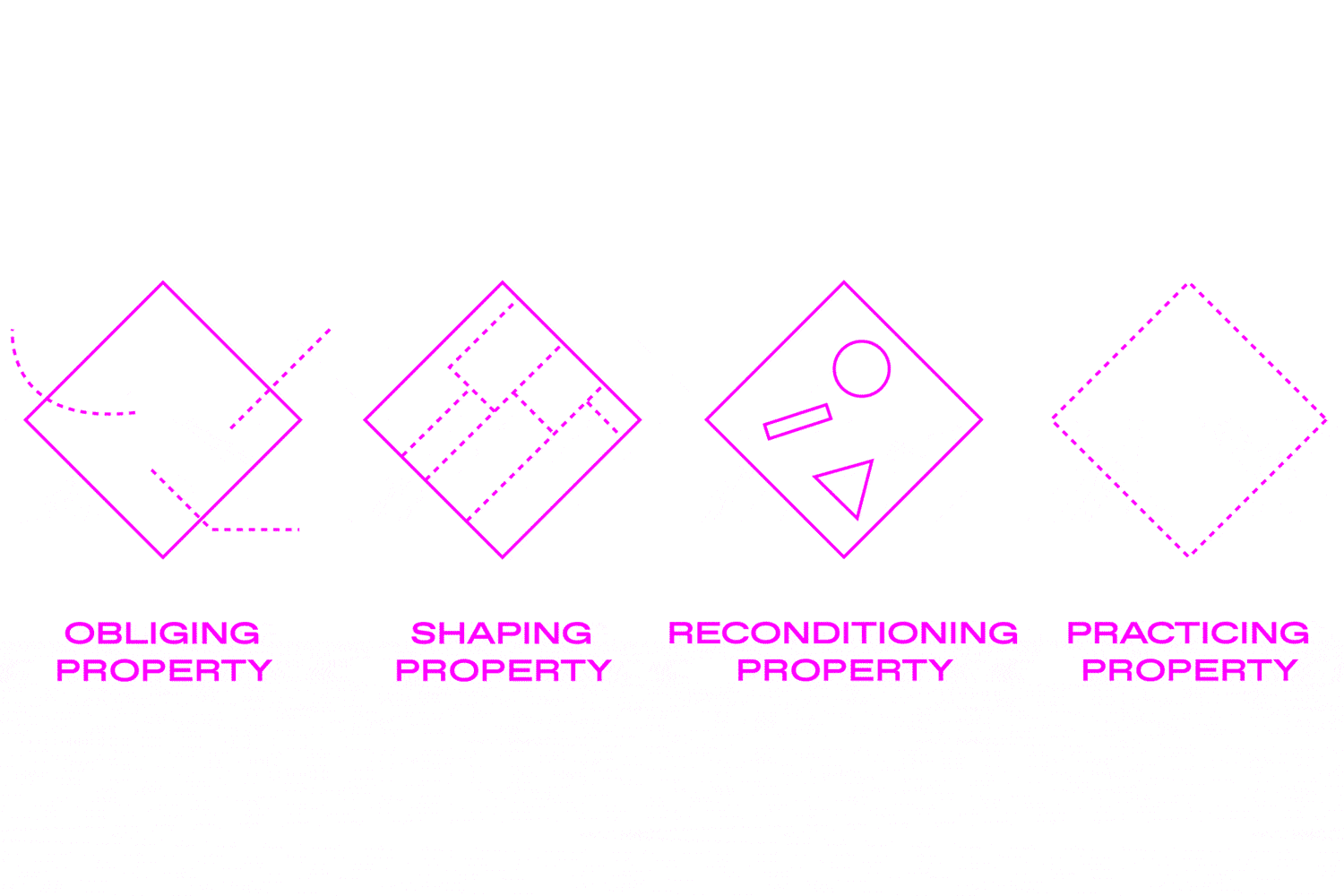
Strictly Infrastructural: Property and Community in Minneapolis
University of Minnesota, 2020
Design studio
The premise of this studio is that urban design is concerned with the design of the site. Rather than directly designing features onto a site, we will operate in the realm of infrastructural conditions — which are in fact already designed, although rarely by architects. To this end, the focus of this studio will be property: the institution of land division. While property is often described as exclusive, immaterial, and state-driven, we will presume the inverse: that it is—and ought to be more—inclusive, material, and organized through socio-ecological customs and neighborly coordination.
Student work
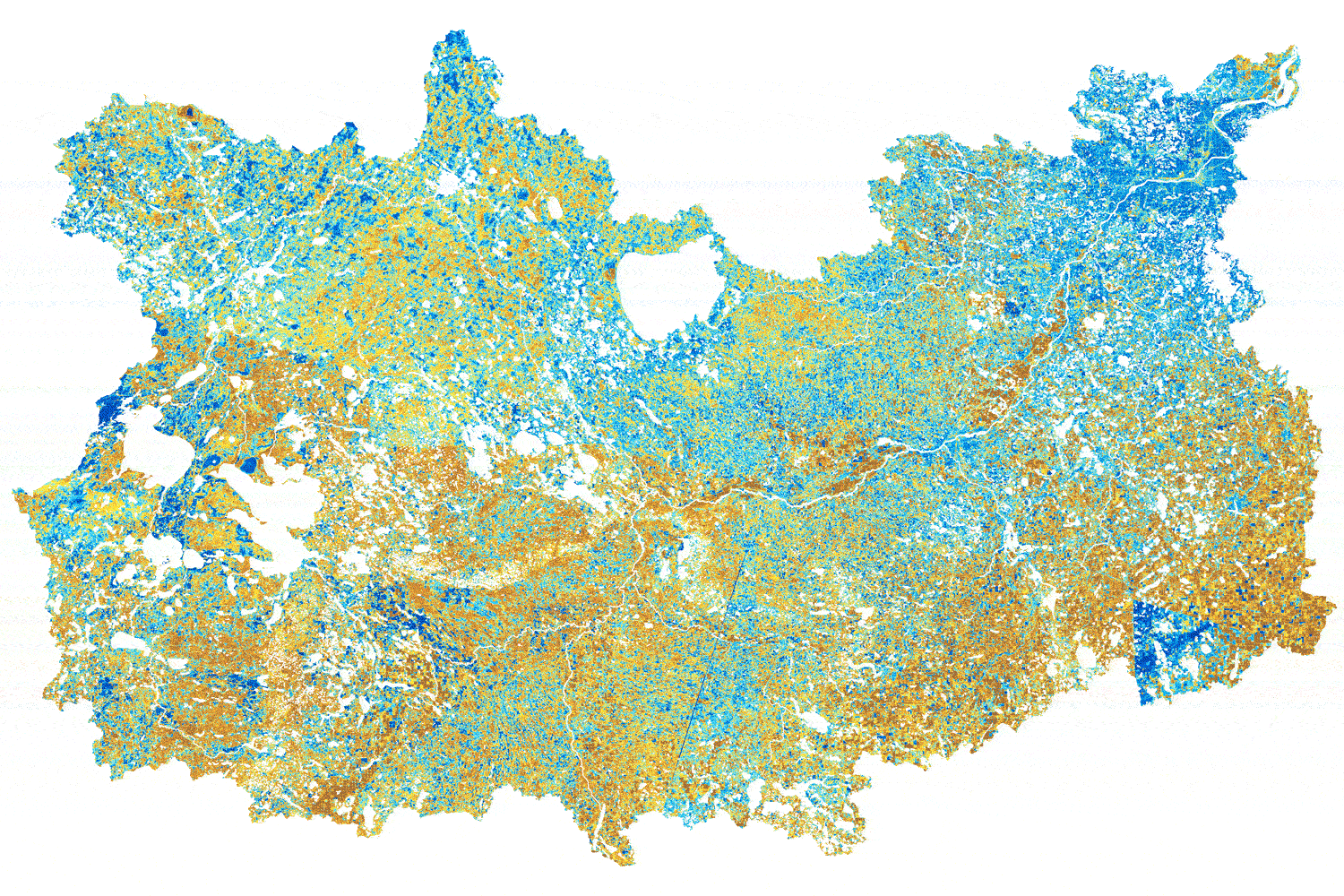
’Exist, Flourish, Evolve’: Designing with the Rights of Nature
University of Minnesota, 2019
Design studio
Winner of Columbia GSAPP 2020 Course Development Prize in Architecture, Climate Change, and Society
This studio is concerned with imagining and articulating how architecture, as a discipline, practice, and material reality, can help uphold the Rights of Nature. Exploring the emerging paradigm of “exist, flourish, and evolve,” the studio will produce concrete manifestations of the ethics of care embodied in the recognition of nonhuman rights. Our multi-faceted subject will be the Mississippi Headwaters watershed, whose ecological communities and dynamics will figure as protagonists in our studio. We will study how the ‘Great River’ propelled Minnesota’s modern productivity, and explore what role it, as a potential rights-bearing entity, might play in reshaping socio-ecological and spatial relations today.
Student work
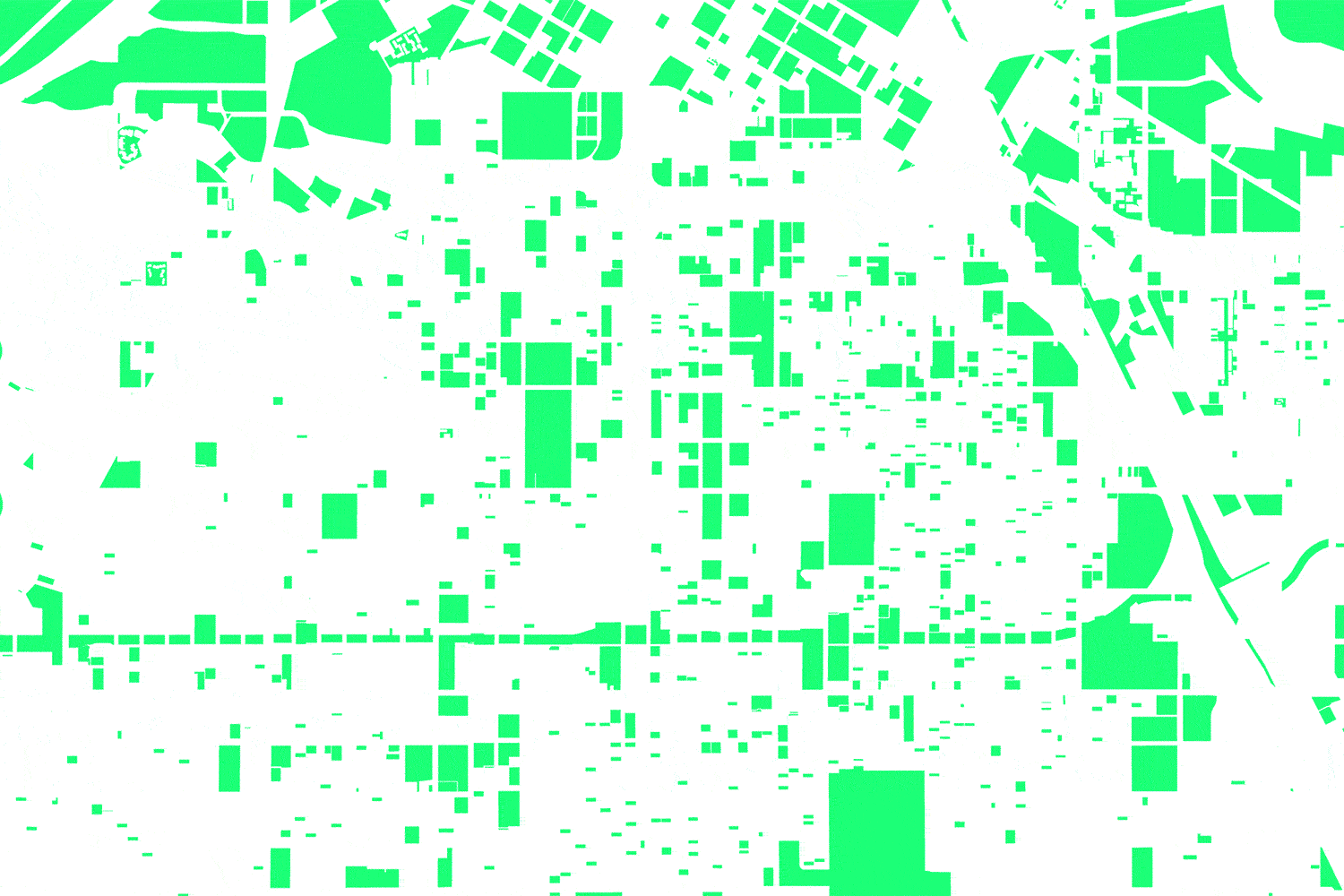
Land Cultures
University of Minnesota, 2020
Design studio
This studio is organized in collaboration with the Indian Land Tenure Foundation and Rondo Community Land Trust, organizations focused on land and how it plays a role in supporting belonging in Indigenous and African-American communities. Both ILTF and Rondo CLT are distinctive in that they respond to systemic land injustices with systemic land interventions, an approach we will aim to learn from and support.

Color of Title: The Architecture of Property and Belonging (Albuquerque)
University of Michigan, 2019
Design studio
This studio is based on the premise that architecture concerns not only individual building artifacts but the totality of spatial, material, and organizational conditions that constitute the environment. Focusing on the context of Albuquerque, New Mexico, the studio has investigated how the city’s complex legal geography—consisting of indigenous reservations, federal conservation lands, and market-oriented development—can be a prompt for architectural production and advocacy.
Student work
Publications
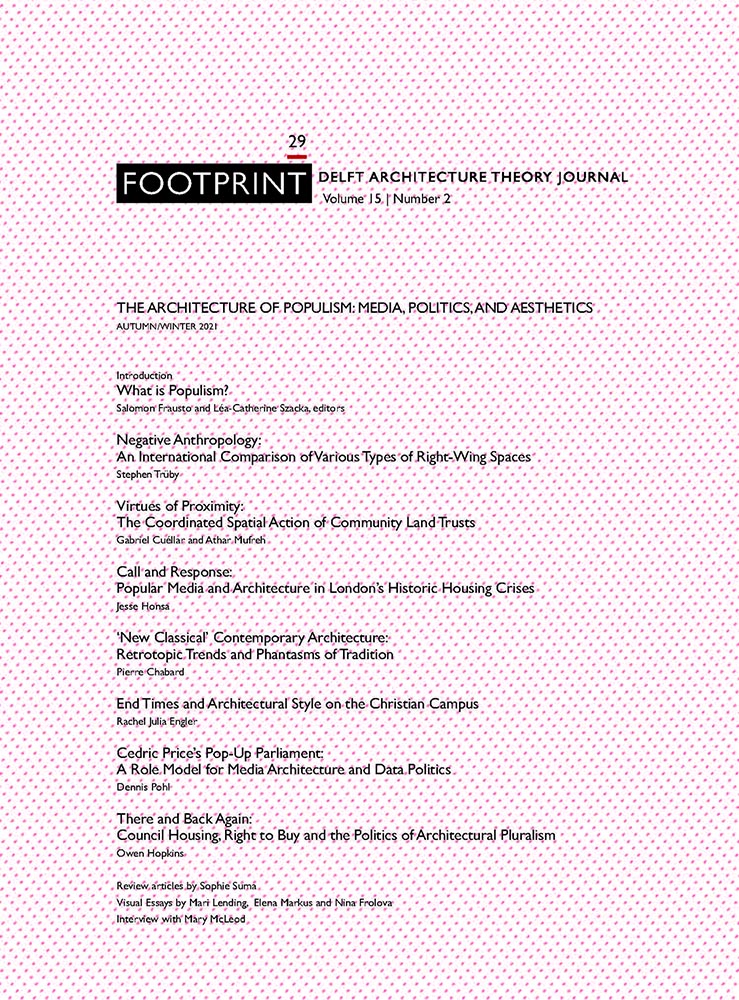
"Virtues of Proximity: The Spatial Coordination of Community Land Trusts," Footprint Delft Architecture Theory Journal, 29 (2022): 23–44.

"Property as Practice: The Collective Landholding Patterns of Black Churches," chapter in Urban Space Unsettled: Routines, Temporalities, and Contestations, Sabine Knierbein, Elina Kränzle,and Ed Wall, eds. (Routledge, 2022).
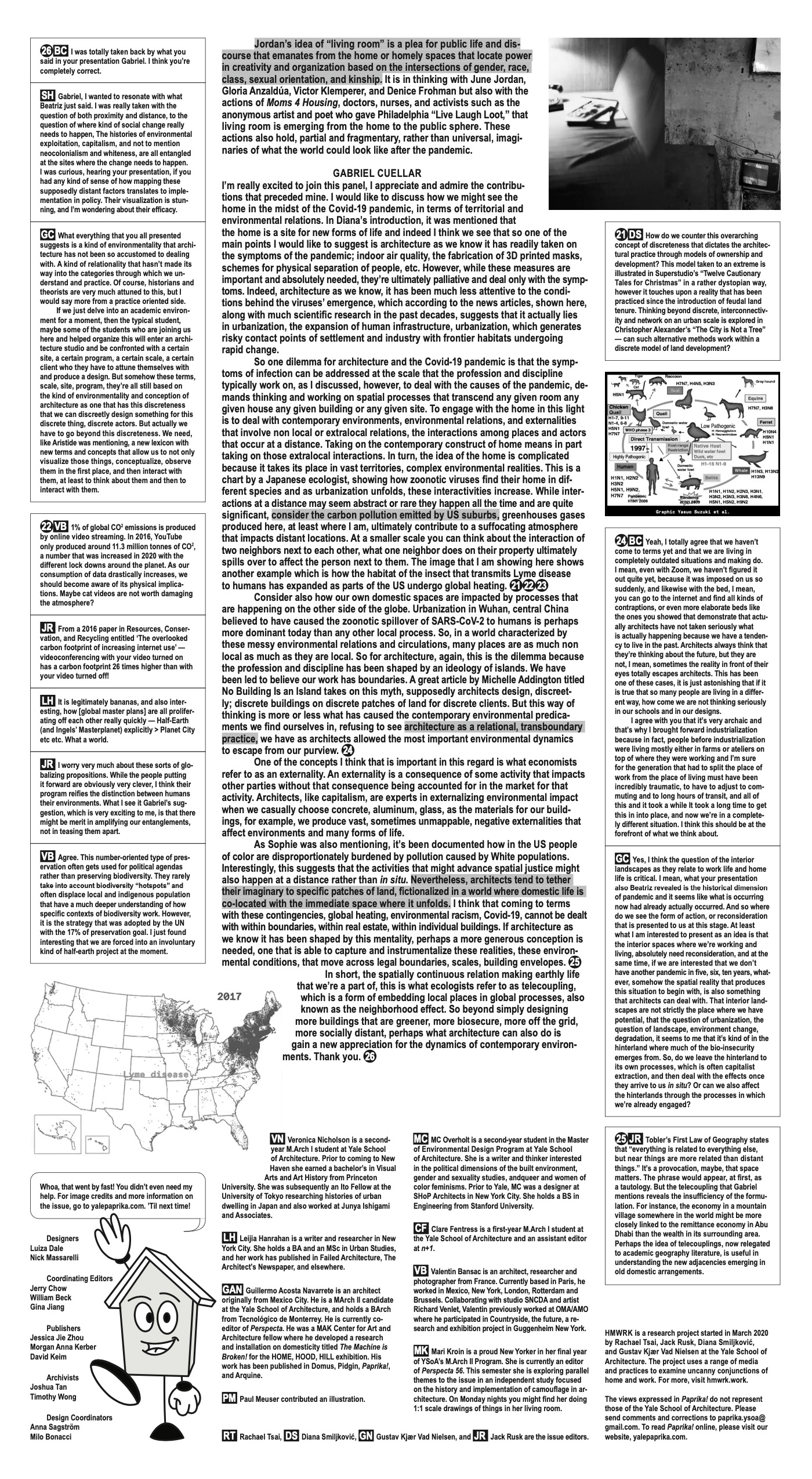
"Pandemic Territories," in Paprika!, 6, 10 (March 2021), Gustav Nielsen, Diana Smiljkovic, Jack Rusk, and Rachael Tsai, eds.
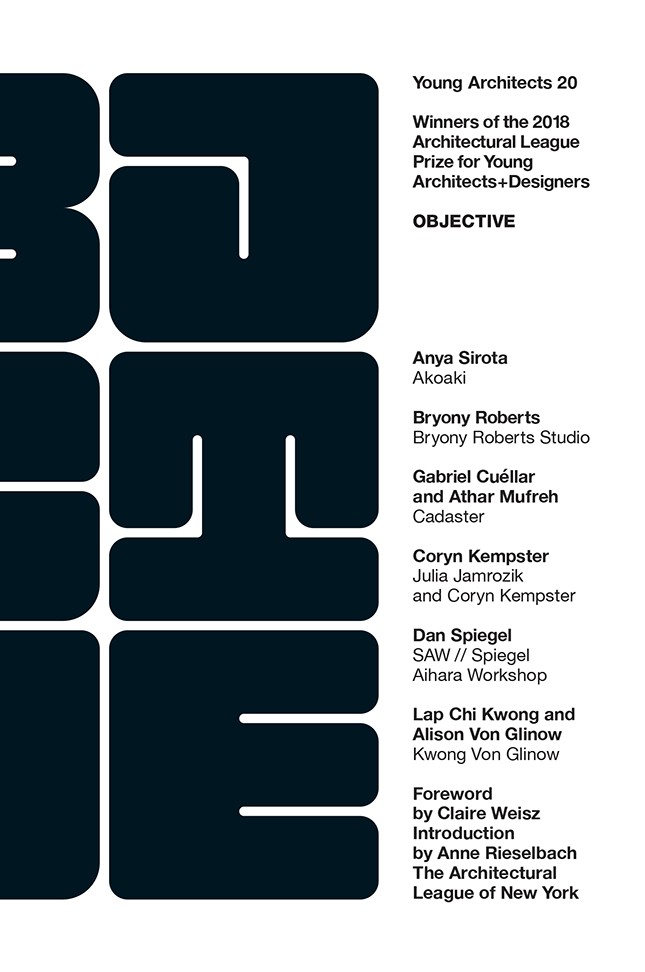
“Cadaster” in Architectural League Prize: Objective (New York: Andrea Monfried Editions, 2020).
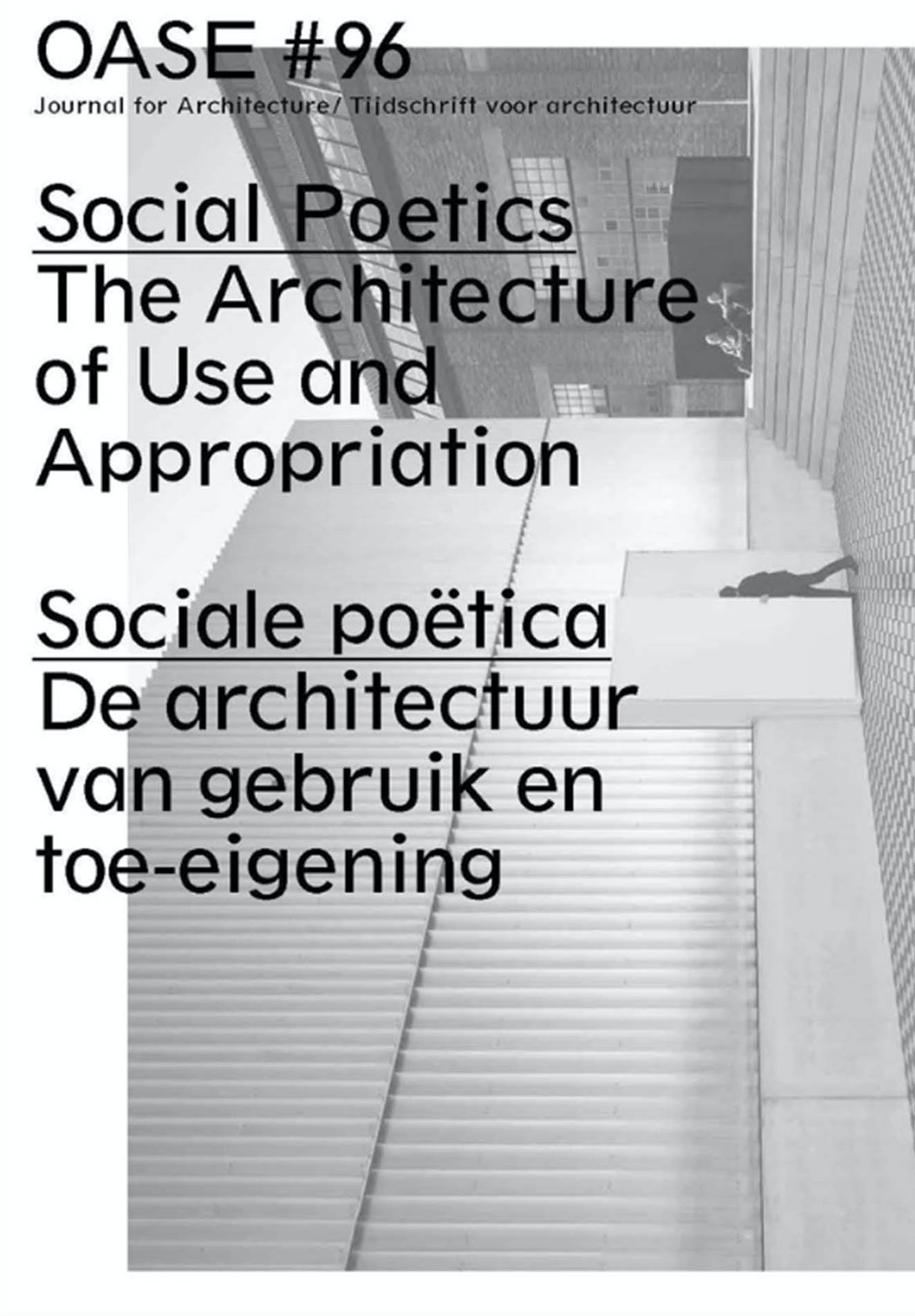
“The Freedmen Churches: Renewing Collectivity from the Margins of the City,” OASE Journal for Architecture, 96 (2015): 91-97.
About
Office agenda
Cadaster is a practice which seeks to advance spatial justice through design. We engage with environments, processes, and relations so as to interface the systems and institutions that govern spatial and social realities. More specifically, we embed design-research in social movements driving institutional change and develop design frameworks to support them. In the process, our work operates within the spatial infrastructures of land division and governance, existing social-material fabrics, and ecologies of environmental change.
Team
Athar Mufreh (she/her) is a designer and educator. She received a Bachelor of Architecture from Birzeit University and Master of Integrated Urbanism and Sustainable Design at Stuttgart University and Ain Shams University. Athar worked as a designer and researcher at the Storefront for Art and Architecture, the New York City Landmarks Preservation Commission and the Center for Cultural Heritage Preservation in Bethlehem. In 2018-2019, she was a lecturer at the University of Michigan Taubman College of Architecture and Urban Planning. Athar is presently a lecturer at the University of Minnesota School of Architecture. Athar is currently working on multi-generational housing and landscape ecology.
Gabriel Cuéllar (he/him/él) is an architect, urban designer, and educator. Gabriel completed studies in architecture and urban design at Carnegie-Mellon University (Pittsburgh) and the Berlage Institute (Rotterdam). He worked in the offices of Gramazio & Kohler (Zurich), Philippe Rahm (Paris), Anne Holtrop (Amsterdam), CDR Studio (New York City), and Enter Architecture/Lantz Full Circle (Houston). He was the Oberdick Fellow at the University of Michigan in 2018-2019, and is currently the Swanson Visiting Assistant Professor at the University of Michigan and Professor-in-Practice at the University of Minnesota. Gabriel’s current design-research focuses on the spatial implications of real property, design approaches for contemporary environments, and the role of architecture in land relations.
Recent collaborators
We are grateful to have collaborated to date with Clare Coburn, Edward Falkowski, Xiaohan Gu, Karun Chughasrani, Mitchell Lawrence, Jakob Mahla, Reed Miller, and Victoria See.
Recent news
2023
March 21
Cadaster exhibits "Mutable Minima," a design project on minimum lot sizes at Mass Support, an exhibition at the Spitzer School of Architecture at City College, City University of New York (curated by Cassim Shepard / TU Eindhoven Curatorial Research Collective).
March 7
At the multidiscplinary Sensing the Environment: Evidence, Narrative, Appearance symposium at the Rhode Island School of Design (organized by Amelyn Ng), Gabriel presents Cadaster’s work on developing visualizations attuned to environmental change. Cadaster also contributes several images to the accompanying exhibition in RISD’s BEB Gallery.
February 1
Cadaster presents its ongoing project with the Lincoln Institute for Land Policy at the Consortium for Scenario Planning 2023 Conference, Phoenix, USA.
January 4
As J. Robert F. Swanson Visiting Assistant Professor at the University of Michigan Taubman College of Architecture and Urban Planning for the Winter 2023 semester, Gabriel will supervise a Master of Urban Design course based in Metro Detroit, together with Salam Rida. The course, “Making Land Relatives: Property and Justice in Southeast Michigan,” takes on community-driven property practices in the region.
2022
November 11
At Columbia University GSAPP, Cadaster presents a lecture titled “Property as Practice,” discussing recent work that tackles real property from a design perspective.
November 8
Cadaster contributes to Places Journal’s Field Notes on Design Activism series, urging designers to consider their work in terms of action and implementation.
September 9
Cadaster introduces a new project at the international symposium, What Next with Mom’s and Dad’s House? The Transformation Potential of the Single-Family House, at the Politecnico de Milano.
June 15
Gabriel introduces and joins in conversation Citygroup and Departamento del Distrito as part of the 2022 League Prize lectures.
June 1
The Lincoln Institute for Land Policy has awarded Cadaster with a $10,000 research grant to study and propose projects with agricultural villages.
February 7
Cadaster organize the University of Minnesota School of Architecture lecture series for spring 2022. The talks are centered on the theme "existing to remain," bringing together critical approaches to retrofitting, circularity, and the surveying of existing conditions.
2021
December 2
Gabriel joins The Architectural League Young Architects + Designers Committee with Tei Carpenter and Luis Beltrán Del Río García. See the League Prize 2022 Call for Entries centered on the theme “grounding.”
July 1
Cadaster is invited to collaborate with 1+1+ in the Detroit Month of Design (September 1–30). Stay tuned for more info.
March 15
Gabriel joins Beatriz Colomina, Aristide Antonas, and Sophie Hochhäusl in conversation for the latest issue of Paprika!, the Yale School of Architecture student journal. The issue is edited by Gustav Nielsen, Diana Smiljkovic, Jack Rusk, and Rachael Tsai.
March 8
Cadaster organize the University of Minnesota’s annual Spring workshop, catalyst. Learn more here and tune into the lecture series Monday, March 8 and Tuesday, March 9.
2020
November 27
The Berlage Center for Advanced Studies in Architecture and Urban Design invites Gabriel to lecture on “The Architecture of Real Property” as part of the school’s “Architectures of Speculation” seminar series. Watch back the lecture here.
July 30
Cadaster participates in a curricular workshop organized by The Temple Hoyne Buell Center for the Study of American Architecture for the “Green Reconstruction” research program.
February 10
Columbia University’s Temple Hoyne Buell Center and the Association of Collegiate Schools of Architecture award Gabriel with the 2020 Course Development Prize in Architecture, Climate Change, and Society. Learn more and see the awarded syllabi here.
2019
June 11
The City of Quebec invites Cadaster to a design workshop for the Rêvons nos rivières project.
March 26
Gabriel takes part in the Taubman College of Architecture and Urban Planning 2018–2019 fellows exhibition, “Things Around Us.”
2018
June 21
As part of the Architectural League Prize 2018 exhibition, Cadaster lecture at The New School’s Parsons School of Design. Watch back the lecture here.
© Cadaster 2022